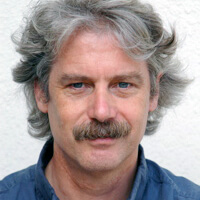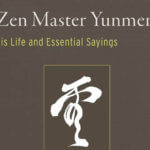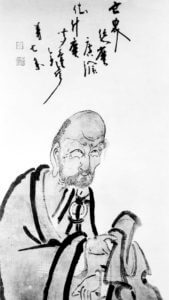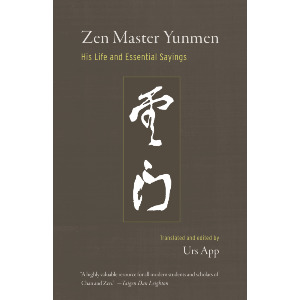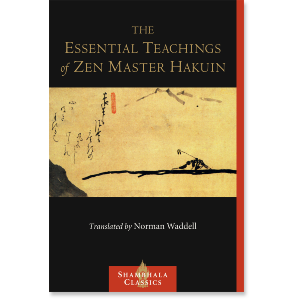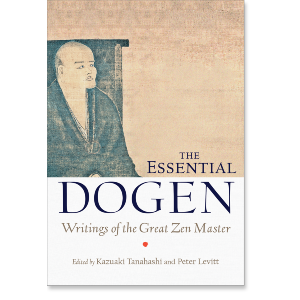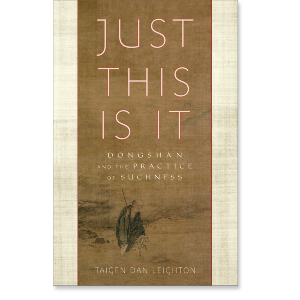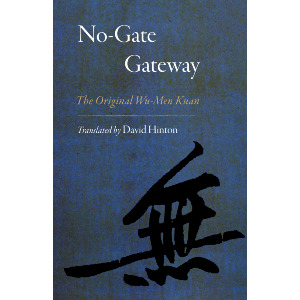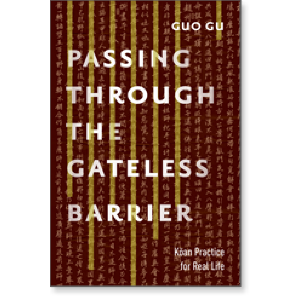Youth
Yunmen was born in 864 in Jiaxing, a town between Shanghai and Hangzhou on China’s eastern coast. His family name was Zhang; but because it was the custom for Buddhist monks to abandon their family names, he became known as Wenyan and later took the name of Mt. Yunmen, at whose foot he built his monastery. To avoid unnecessary confusion, I will refer to him as Yunmen throughout the text.
Yunmen’s birth came at a time of great political upheaval. In the years between 842 and 845, the central government of China had proscribed Buddhism and other “foreign” religions. Several hundred thousand monks and nuns were defrocked and secularized, 4,600 monasteries and 40,000 smaller sanctuaries were destroyed or converted to other uses, and the greater part of monastic property was seized. As the Tang period was drawing to a close, the central government had already lost much of its power, and in some regions of the empire (an area about the size of Europe) that power had virtually disintegrated by the time of Yunmen’s birth. In these remote regions Buddhist movements were gaining in vigor and influence and developing ever more idiosyncratic forms of teaching and practice. The most prominent of these movements was Chan.
Before we follow the course of Yunmen’s life, a cautionary remark is appropriate: The biographies of religious men in China are, not unlike those of other religions, full of set stories and expressions. Pivotal events in a person’s life tend to receive little attention in early sources and ever more detailed descriptions in later ones. It is thus impossible to take all the available information at face value; usually the best one can do is to rely on early sources and carefully compare all available materials.
The biographies of religious men in China are, not unlike those of other religions, full of set stories and expressions. Pivotal events in a person’s life tend to receive little attention in early sources and ever more detailed descriptions in later ones. It is thus impossible to take all the available information at face value; usually the best one can do is to rely on early sources and carefully compare all available materials.
Like many other eminent monks, Yunmen is said to have had extraordinary powers of memory. The stone inscription of 964 reports that from birth he showed signs of great intelligence and that as a child he learned poems and entire Buddhist scriptures by heart after a single reading. Yunmen is also said to have been keenly aware of his spiritual leanings and to have decided to take the path of monkhood upon reaching adolescence. According to the biography contained in the Record of Yunmen, young Yunmen was also characterized by a strong aversion to vulgarity, a tendency to be exemplary, and great eloquence.
Several sources assert that as a boy Yunmen entered the Kongwang temple of his hometown, where he passed some years studying under a specialist in monastic discipline named Zhi Cheng. While the boy underwent this initial training, the rebellion of Huang Chao (874–883) shook the foundations of the Chinese empire, and both its eastern and southern fringes (the regions where Yunmen grew up and eventually settled down, respectively) gradually achieved autonomy. Various local leaders emerged and took power; in the area near Shanghai that contained Jiaxing, for example, the former bandit leader Qian Lu worked his way up to the position of general (878) and eventually supreme potentate.
Yunmen took the monastic precepts at the usual age of twenty in the town of Changzhou, near beautiful Suzhou, a town not far inland from Shanghai that is famous for its exquisite gardens, romantic canals, and tree-lined boulevards. Afterward, he returned to Zhi Cheng and concentrated on studying the voluminous monastic rule literature. We are told that he soon started to lecture about monastic discipline. It is not clear how many years Yunmen remained with this first teacher, and since no source gives exact dates for the period between Yunmen’s twentieth and thirtieth year, we must be content with approximate dates.
Meeting with Master Muzhou
Around the age of twenty-five Yunmen set out to meet the famous Daozong who was known as “Reverend Chen” and sojourned in Muzhou, about seventy miles upriver from Hangzhou. Unfortunately not much is known about this man; according to the Transmission of Treasures of Monks of the Chan Tradition of 1122, he had been (together with Linji / Rinzai) a disciple of the famous Master Huangbo (Jap. Ōbaku). Having left the Mishan monastery at Gaoan in what is now Jiangsi province, Reverend Chen returned home to Muzhou to take care of his aging mother. After a stay at the local Longxing monastery, he left monastic life altogether and supported himself and his mother by making sandals. Like many other Chan masters, he became known under the name of the locality where he stayed and thus was also called Master Muzhou. He was noted for his reclusiveness and his abrupt manner; indeed, the records about him consist almost entirely of very short dialogues.
By the time that Yunmen visited him, Muzhou was probably very old. It is said that Yunmen tried on one or more occasions to see the former monk but was turned away. The older stone inscription describes his crucial attempt as follows:
[Master Muzhou’s] one room was usually shut, and it was completely empty. When he occasionally did receive people, he allowed no deliberations. When Yunmen could freely roll in and out, he went straight to Muzhou’s door and knocked.
Master Muzhou asked, “Who is it?”
Yunmen: “It is me, [Yunmen] Wenyan.”
Muzhou blocked the entrance and said, “Why do you keep coming?”
Yunmen replied, “I am not clear about myself.”
Muzhou said, “Absolutely useless stuff!” then pushed Yunmen out and shut the door.
In this way Yunmen attained understanding.
Though later sources embellish this story, in the majority of sources its core remains essentially unchanged: the problem that drives Yunmen to seek instruction is not something that bothers him but rather his own self. This is not one of a number of problems he has but rather the problem he himself is. I will come back to this point in the introduction to the master’s teaching.
Another common element of the various sources is that Yunmen, having barely formulated his problem, is jolted by an abrupt response from Muzhou and at that moment gains a profound realization. There remains disagreement over various aspects of this encounter, including the number of Yunmen’s previous unsuccessful visits and the exact nature of the event that triggered the breakthrough.
Whatever the specifics of the encounter, it resulted in a decisive breakthrough that the sources describe with the vocabulary commonly used for Buddhist awakening: enlightenment, liberation from doubts, perfect match with the core of teachings, realization of the essence of one’s own heart-mind and of the great meaning—great awakening, satori.
Whatever the specifics of the encounter, it resulted in a decisive breakthrough that the sources describe with the vocabulary commonly used for Buddhist awakening: enlightenment, liberation from doubts, perfect match with the core of teachings, realization of the essence of one’s own heart-mind and of the great meaning—great awakening, satori.
After this event, Yunmen stayed with Master Muzhou for several years though we cannot be sure of the exact number of years, the similarity of the style and diction between the Record of Yunmen and that of Muzhou suggests that Muzhou’s influence was deep and lasting.
Encounter with Master Xuefeng; Pilgrimage
Muzhou was fully conscious of his disciple’s potential, and after having taught Yunmen for a few years he sent him to the renowned Chan master Xuefeng for further training. Such training after awakening was common and served to prepare future teachers for their task. In general, many teachers were visited over one or more decades, in the course of which teaching skills were gradually honed and experience was gained.
In the case of Yunmen, this training lasted for seventeen years and began around his thirtieth year with the visit to Xuefeng. This master was living in the Kingdom of Min on the coast opposite the island of Taiwan. This region, which corresponds roughly to today’s Fujian province, had become rather wealthy through sea trade and was quick to assume independence when the authority of the central government waned. Thanks to the strong interest in Buddhism shown by the potentate Wang Shenzhi (a good friend of Master Xuefeng), several large monasteries were being built or restored around the time of Yunmen’s arrival. Master Xuefeng taught at the monastic community of the Snow Peak (Xuefeng) temple on Mt. Elephant Bone, which was said to have been home to more than a thousand monks. The proverbial expression “In the north Master Zhaozhou, in the south Master Xuefeng” suggests just how famous Master Xuefeng must have been.
The story of the meeting of Yunmen and Xuefeng fired the imagination of many a writer, but again we will try to stay close to the earlier stone inscription—which, incidentally, agrees here with the Collection from the Founder’s Hall, the important early Chan history compiled in circles around Xuefeng before 952:
Master [Yunmen] thus went to Min. Hardly had he climbed Mt. Elephant Bone than he already demonstrated his immeasurable ability: When he reached Xuefeng’s assembly and the threefold salutation was about to be performed, Xuefeng said, “How could it come to this?” Master [Yunmen] did not move one hair’s breadth and impressively demonstrated his complete ability. But although he had cut through the stream [of deluded consciousness] he also carried horns [like the deluded ones]. So none of the more than one thousand students [of Xuefeng] knew for sure whether he was an ordinary or a holy man. For many cold and hot seasons, Yunmen went to question [Xuefeng] at dusk and dawn.
This account intends to point out that when he went to meet Master Xuefeng, Yunmen already had great ability but did not wish to show it off. Section 279 of this volume furnishes an embroidered version of this meeting and shows how editors added much detail to such stories.
It is certain that Yunmen spent a number of years with Xuefeng, although it is impossible to know exactly how many. In view of the long journey that followed the stay at Mt. Elephant Bone, it seems likely that Yunmen left in his late thirties and spent ten more years on pilgrimage before he settled down in China’s deep south at the age of forty-seven. I will not trace all of his movements during this journey; suffice it to say that Yunmen visited and interviewed many masters before, in 911, visiting the temple in South China where the Sixth Patriarch Huineng is said to have stayed. It was in this region with its long Chan tradition that Yunmen was destined to begin his active life as a Chan teacher.
Yunmen visited and interviewed many masters before, in 911, visiting the temple in South China where the Sixth Patriarch Huineng is said to have stayed. It was in this region with its long Chan tradition that Yunmen was destined to begin his active life as a Chan teacher.
Arrival in South China
Like Min, the southernmost region in the Chinese empire (which included the coastal stretches around Hong Kong and the Cantonese hinterland) reached comparative wealth through sea trade and inched toward autonomy as soon as central power faltered. Liu Yin, a man from the Min region, had moved to the Canton region and made a name for himself after 878 as a fighter loyal to the central government in its struggle against the rebel Huang Chao. While the central government gave him a succession of increasingly lofty titles, he brought the whole region under his power. He died the same year Yunmen arrived in this region, and the younger brother who succeeded him, Liu Yan, later became Yunmen’s most important sponsor.
After visiting the pilgrimage site connected with the Sixth Patriarch, Yunmen traveled to the nearby city of Shaoguan and met with Master Rumin of Lingshu, who headed a community of monks. Old sources simply state that the two hit it off well and formed a deep friendship. Later sources emphasize, as biographies of Chinese monks often do, Rumin’s spiritual powers and tell us that Rumin had known all along that Yunmen would visit and when. Even more recent sources state that Rumin intuited the exact time of Yunmen’s arrival and sent his monks to greet him. At any rate, Yunmen became the head monk in Master Rumin’s monastery and served in this capacity until Rumin’s death seven years later. It is reported that, before he died, Rumin foresaw an impending imperial visit to his temple. Liu Yan (who had given himself the name of Emperor Gaozu) did indeed come to the Lingshu monastery soon after Rumin’s death in 918 and gave orders to cremate the master’s body and to fashion a statue in his likeness. Liu Yan first met head monk Yunmen during this visit.
After succeeding his brother in 911, Liu Yan, no longer content with the ever more bombastic titles that the central government had been conferring on him to keep him subservient, had in the year 915 stopped all financial contributions. Two years later he elevated himself formally to the post that he in fact already occupied: that of supreme ruler of his own empire, which he first named Great Yue and later Southern Han. After Rumin’s death, Yunmen was summoned for an audience with Emperor Gaozu (Lin Yan), who honored him with the purple robe, a governmental decoration reserved for eminent monks. One year later, in 919, the emperor named the fifty-five-year-old Yunmen abbot of Lingshu monastery. This was the official beginning of thirty years of uninterrupted teaching for Yunmen.
Teaching
For a few years, Yunmen taught in the Lingshu monastery in Shaoguan, but the monastery’s steady stream of visitors soon became too distracting for him and his students. The stone inscriptions tell us:
Master Yunmen got tired of receiving and entertaining people and wished to reside at a remote and pure place. He turned to the emperor with a request to change his place of residence. He got the imperial permission, and in the twentieth year of the sixty-year cycle (923), Yunmen ordered his disciples to open up Mt. Yunmen for construction. Five years later, the work was completed.
So at the age of sixty-four, Yunmen found the quiet place where he would teach monks and lay disciples for another two decades. Most of the talks and dialogues contained in the Record of Yunmen presumably come from this twenty-year period. Here the master had a stable monastic setting and a community that included those who took down notes from his talks and thus laid the basis of the text that is partly translated in this volume. Furthermore, Yunmen enjoyed the full support of Emperor Liu Yan, who had himself brushed the characters “Chan monastery of Enlightened Peace” on the monastery’s large door plate. The inscription of 959 tells the following story about Yunmen’s dealings with Liu Yan:
In the thirty-fifth year (938) His Heavenly Majesty the Great Emperor Gaozu (Liu Yan) summoned Master [Yunmen] to the Imperial Palace [for an audience]. The emperor asked, “What is Chan all about?” Master [Yunmen] said, “Your Majesty has the question, and your servant the monk has the answer.”
The emperor inquired, “What answer?” Master [Yunmen] replied, “I request Your Majesty to reflect upon the words your servant has just uttered.” The emperor was pleased and said: “I know your personal precept, and I have respected it early.” He decreed that the office of Inspector of the Monks of the Capital be given to Master [Yunmen]. The Master remained silent and did not respond.
Coming back to this decree, an imperial advisor said, “This Master has completed his training and knows the path; he is not likely to enjoy rising to a high post.” The emperor then said, “Shall we let you return to your mountain?” Master [Yunmen], full of joy, shouted thrice, “Long live the emperor!” The following day Master [Yunmen] was presented with goods from the treasury, incense, and medicinal herbs, and he received donations of salt and other goods. When Master [Yunmen] returned to his mountain, [the emperor] conferred along with all this the title “Genuine Truth” upon him. Following this [His Majesty] gave donations several times every year; these donations were often not duly recorded.
Yunmen’s good relations with the imperial court were maintained beyond the death of Liu Yan in 942 and the murder of his successor one year later. The next emperor, who called himself Zhongzong, invited Yunmen to the imperial palace for one month and gave him many presents, including an imperial inscription for the master’s grave. But although Yunmen was already seventy-nine, he taught at the foot of Mt. Gate-of-the-Clouds for a few more years before making use of this gift.
Death of the Master
On May 10, 949, the eighty-five-year-old master suddenly had no more appetite and slept less. The earlier stone inscription gives the following account about his death:
When his attendant offered him a hot [medical] broth, the Master handed the bowl back and said, “First, I am fine; second, you are fine! Be sure to write a letter to request my leave from the emperor.” And then he wrote himself a document with his admonitions for posterity that went: “After my death I permit neither the wearing of mourning clothes in conformity with worldly custom nor wailing and holding a ceremony with a funeral carriage. This would be a violation of the Buddha’s precepts and a source of trouble for the Chan school.” He transmitted the Dharma to Zhixiang [who is] the Great Master Shixing of Mt. Baiyun. The Master’s disciples had already organized the assembly accordingly. At the hour of the rat on the tenth day of the fourth moon of the forty-sixth year (of the sixty-year cycle; between 11 p.m. of May 10 and 1 a.m. of May 11, 949), the Master left this world.
Oh! The boat of compassion having been destroyed
Samsara will not attain the shore of salvation.
The Dharma mountain having crumbled What have flying and walking creatures left to rely upon?
One thousand monks and laypeople participated at the funeral ceremonies that took place fifteen days after Master Yunmen’s death. In accordance with the master’s instructions, his corpse was put as it was into the burial site inside the master’s living quarters. The stone inscriptions state that fifteen days after his death he still looked as if he were alive. The biography of the Record of Yunmen contains additional details about the master’s death and burial:
On the tenth day of the fourth month of Qianhe 7, Master Yunmen passed away. In the morning he had composed a message to take leave from the sovereign and at the same time set forth his testament. Then he had folded his legs and died. Having had the honor of receiving an imperial gift of a stupa inscription, it was ordered in the Master’s last will that his body was to be placed as it was inside his living quarters, and that the stupa inscription donated by the sovereign be properly displayed there. [He had ordered them] not to build a special stupa. In accordance with these instructions, the disciples buried the Master in his living quarters and considered his stupa to be there.
The sadness that prevailed at the funeral is described with the poetic license typical of Chinese inscriptions:
On this day the drifting clouds stood [respectfully] still and the grave tree withered. The cry of the mountain’s lone monkeys sharpened the pain of the loss, and invisible birds’ voices that pierced the woods heightened the regret and sadness of separation. The mourners hid [their faces] in their collars and stood around crying.
The Mummy
If the participants at Yunmen’s funeral had been stunned that the corpse of the master looked as if it were alive, they were soon to experience still greater wonders. The second stone inscription states that in the seventeenth year from Yunmen’s death the master appeared to the magistrate Ruan Shaozhuang in a dream and instructed him to open his grave. When it was opened, the master’s body was found unchanged except that its hair, fingernails, and toenails had grown longer. The eyes were half open and glistened like pearls, the teeth sparkled like snow, and a mystical glow filled the whole room. Several thousand monks and laypersons are said to have witnessed this.
By imperial edict the mummy of Yunmen was brought with great ceremony into Guangzhou, the capital, where it was honored for an entire month—even by the current ruler Liu Chang, who had more sympathy for Daoism. This last of the rulers of the Southern Han empire also bestowed a posthumous honorary title upon the master and gave the monastery at the foot of Mt. Yunmen the name it carries to this day: Chan Monastery of Great Awakening. The mummy was returned to the Yunmen monastery, where it remained for more than one thousand years. Having disappeared in the mid-1970s during the Cultural Revolution, it must at this point be considered lost.
This has been excerpted from Zen Master Yunmen: His Life and Essential Sayings.
Related Books
$19.95 - Paperback
The Essential Teachings of Zen Master Hakuin
$24.95 - Paperback
$21.95 - Paperback
$29.95 - Paperback
$19.95 - Paperback
Passing Through the Gateless Barrier
$34.95 - Paperback
